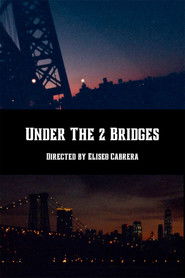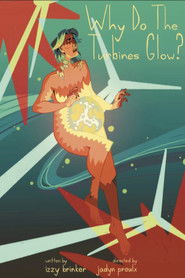New Movies on Pantaflix - Page 4
-
Behind Bars
2025
Behind Bars
2025
Juan López is going to his first pelota paleta tournament match as a registered player, but he's on the bench. However, there's a chance he might get on the court. -
Silence
2025
Silence
2025
Pedro, a man physically and emotionally wounded, carries the weight of past trauma as he silently haunts his house, tormented by memories of childhood screams and laughter. His thirst for revenge leads him to Santiago, a man seemingly connected to his pain. -
Carne
2025
Carne
2025
Micaela, a young woman haunted by the tragedies of her past, takes a trip to spend a night in a cabin in the woods with her friends; but an old urban legend of the place turns out to be true; and the young people are forced to run for their lives. -
Under the 2 Bridges
2025
Under the 2 Bridges
2025
Javier is struggling to live alone in New York during the pandemic. He misses his parents, who live in Argentina, and tries to reconnect with an old friend. However, his old addictions resurface, complicating his attempts to reconnect with his Argentine culture, his parents, and his old friends. -
The Date
2025
The Date
2025
A young man tries to reach the picnic that his beloved girlfriend has lovingly prepared, but on the way a mime appears to him and, after performing his routine, demands monetary compensation for his effort. -
Your Worst Nightmare
2025
Your Worst Nightmare
2025
Lucia tells her psychologist about the recurring nightmares she has in which she finds herself kidnapped by a family of sadistic lunatics. -
Crime for Crime
2025
Crime for Crime
2025
The walk of a guy is interrupted by a suspicious individual who follows him relentlessly. The escape becomes a matter of life or death when the suspect pulls out a knife, revealing his intentions, but not yet his motives. -
Aquí, entre el vacío
2025
Aquí, entre el vacío
2025
Guillermo, a young photographer, begins to photograph a close friend who is terminally ill. The camera comes between them, highlighting the boundaries between art, image, and memory. -
Ayer ya es tarde
2025
Ayer ya es tarde
2025
After surviving the collapse that took the love of his life, Kairo discovers a rift in time: the chance to go back a few seconds before the disaster. Will he be able to recover what he lost without getting lost in the past? -
Amaré
2025
Amaré
2025
A chance encounter brings Benito and Lisa together on an intimate journey of tenderness, companionship, and shared vulnerability. But every love story leaves its mark, and sometimes the memory of the one we love becomes a mirror reflecting our own wounds. An exploration of love, loss, and the strength of emotional resilience. -
Aires de olvido
2025
Aires de olvido
2025
In the chaos of a protest, a young cameraman is critically wounded by the police. He loses his sight, his job, his direction, and a part of himself. While grappling with a harsh economic reality, his few colleagues emigrate to the other side of the world. Wandering through a forgotten Buenos Aires, caught between the desire to escape and the impossibility of doing so, Ignacio faces a crisis in a country crumbling along with his dreams. -
Cómo funcionan casi todos los rodajes universitarios y por qué los seguimos haciendo
2025
Typical chaotic student film shoot -
Encías
2025
Encías
2025
When Pablo goes to the bathroom to brush his teeth, he starts brushing harder, until suddenly he feels something strange: he puts his hand in his mouth and pulls out one of his gums. In a desperate attempt, Pablo invents a solution to get it back. -
Why Do The Turbines Glow?
2025
A pregnant teenager faces judgement from family and friends as she tries to convince them of her child’s greater purpose. -
BUS!
2025
-
Kapag Tumayo Ang Testigo
2025
Catch the sexy Divine Villareal, Audrey Avila, and Reina Castillo, joined by fresh faces Rhea Montemayor and Chelsea Ylore, as they ignite this daring comedy about a groom desperate to fix his performance problem just days before his wedding. -
Fear, My Sickness
2025
Fear, My Sickness
2025
-
Mirreyes vs Godínez: A Special of Christmas
2025
star 7A deal must be closed, and if they fail, they'll have brought their romeritos in vain. In the middle of the discussion, Genaro receives an unexpected visit: the ghost of Don Francisco, who will teach him the true meaning of Christmas. -
El club del jefe
2025
El club del jefe
2025
-
The Lost Chapter: Yuki's Revenge
2025
star 7.2Visionary director Quentin Tarantino had a dream of a Kill Bill chapter that never made it to the silver screen, a chapter known as “Yuki’s Revenge.” Over 20 years later, Tarantino and Epic have come together to bring the story to life in Fortnite.
 Netflix
Netflix
 Amazon Prime Video
Amazon Prime Video
 Apple iTunes
Apple iTunes
 Apple TV Plus
Apple TV Plus
 Disney Plus
Disney Plus
 Google Play Movies
Google Play Movies
 Paramount Plus
Paramount Plus
 Hulu
Hulu
 HBO Max
HBO Max
 YouTube
YouTube
 fuboTV
fuboTV
 Peacock
Peacock
 Peacock Premium
Peacock Premium
 Amazon Video
Amazon Video
 The Roku Channel
The Roku Channel
 AMC+
AMC+
 Kocowa
Kocowa
 Hoopla
Hoopla
 The CW
The CW
 Vudu
Vudu
 Starz
Starz
 Showtime
Showtime
 PBS
PBS
 Pantaflix
Pantaflix
 FXNow
FXNow
 Tubi TV
Tubi TV
 Kanopy
Kanopy
 Comedy Central
Comedy Central
 Crunchyroll
Crunchyroll
 Microsoft Store
Microsoft Store
 Redbox
Redbox
 Sun Nxt
Sun Nxt
 ABC
ABC
 DIRECTV
DIRECTV
 Crackle
Crackle
 Fandor
Fandor
 Plex
Plex



















